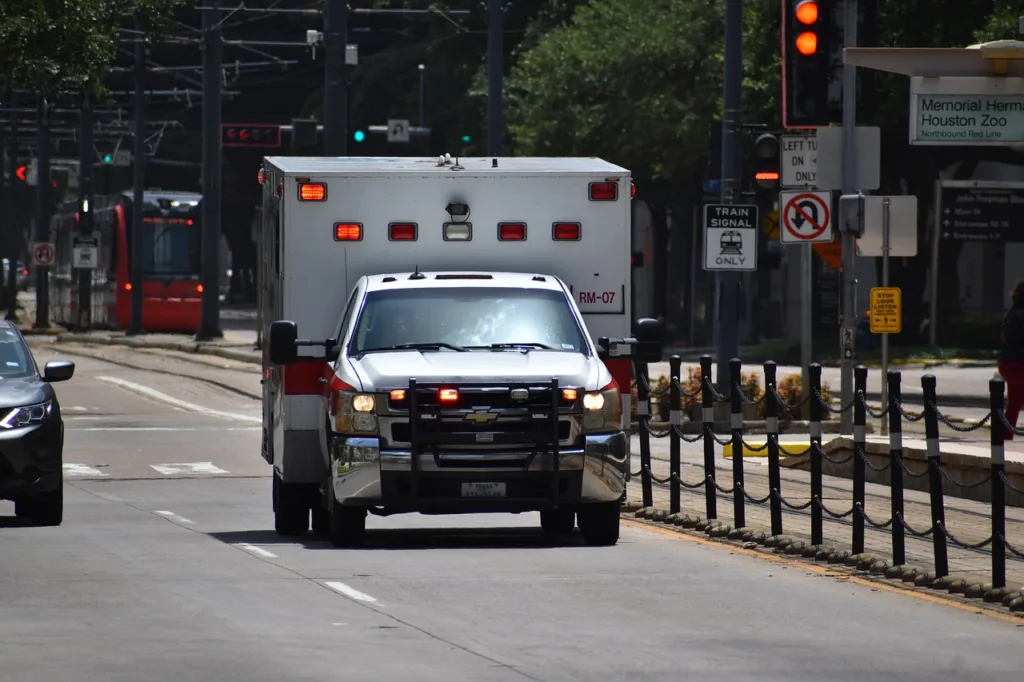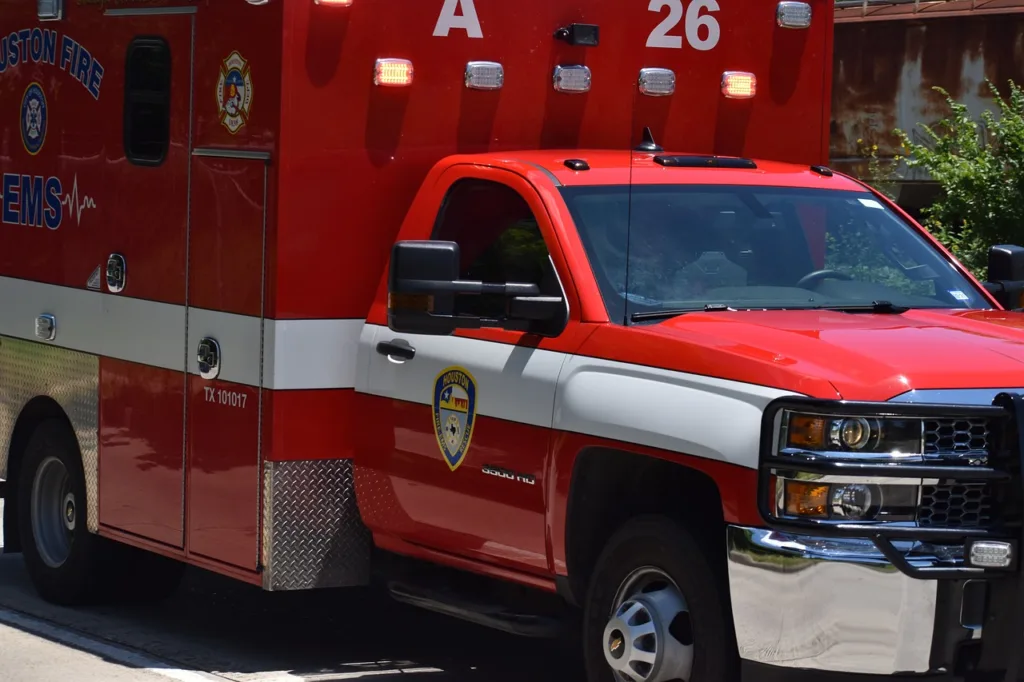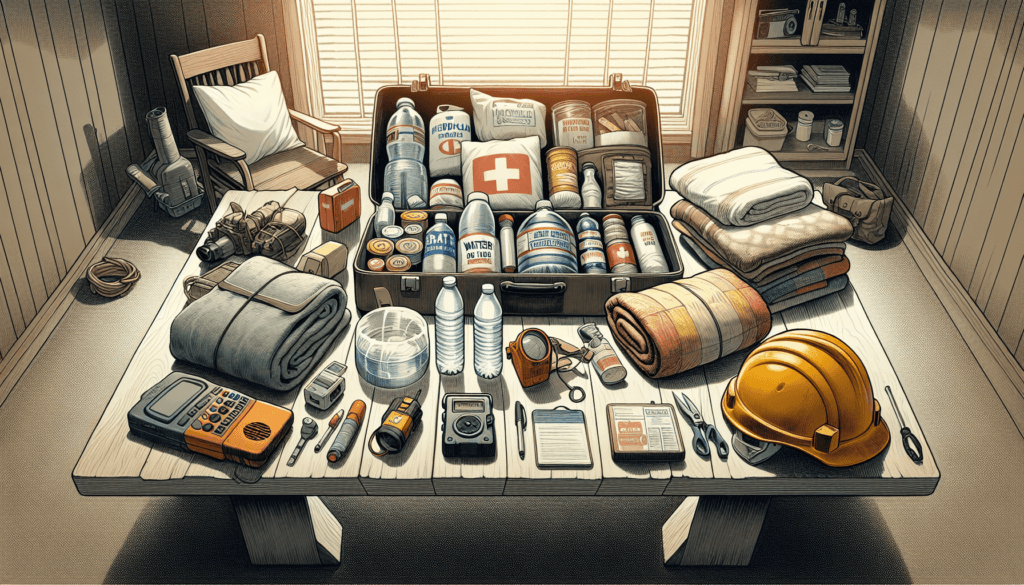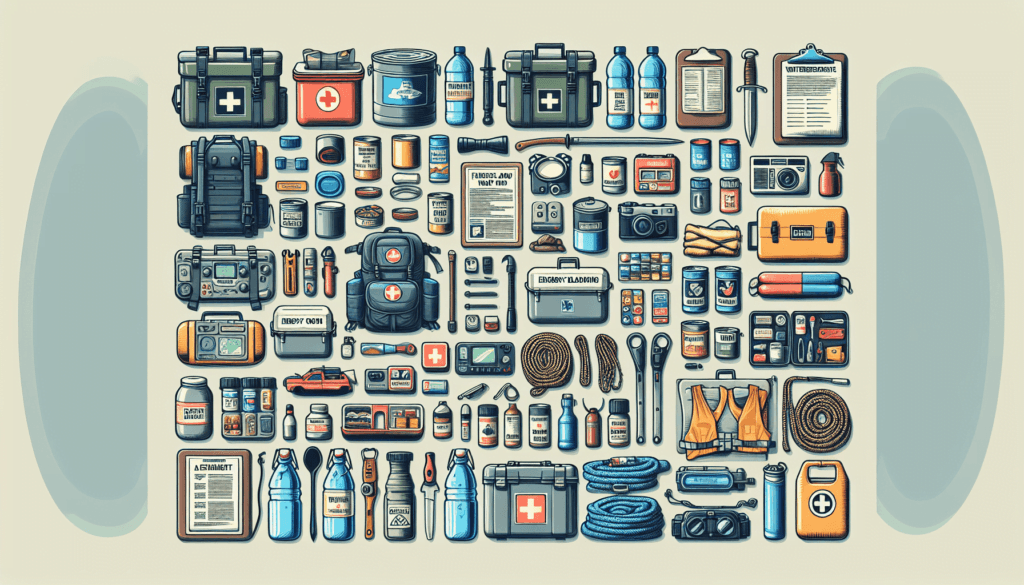In “Stay Secure: essential supplies for Natural Disaster Preparedness,” you’ll find an insightful discussion that underlines the importance of readiness in the face of unpredictable natural calamities. The article uses compelling facts and in-depth analysis to explore optimal ways of preparing for potential disasters, focusing on the necessity of essential supplies. The conversation draws on a wealth of knowledge, spanning from historical context to rise in modern trends for disaster preparedness, all meticulously examined to provide you with a clear understanding of the topic.
Highlighted significantly are relevant case studies and comparisons of differing perspectives, providing a well-rounded view on the subject. Building on this balanced assessment, the discourse goes further to uncover anticipated future trends and their consequent implications, leaving no stone unturned in ensuring you, the reader, is sufficiently enlightened, ready, and secure.
Table of Contents
Stay Secure: Essential Supplies for Natural Disaster Preparedness

This image is property of pixabay.com.
Understanding Natural Disaster and Its Impacts
Underlying concepts of natural disasters
Natural disasters occur when natural hazards intersect with human communities. These events can be meteorological, like hurricanes and tornadoes, geophysical, like earthquakes and avalanches, or hydrological, like floods and tsunamis. A critical piece of your disaster preparedness involves understanding the types of natural disasters that can occur and the risks they pose.
Different types of natural disasters
There are numerous types of natural disasters, each with distinct causes and effects. Some are triggered by weather phenomena, such as hurricanes, tornadoes, and blizzards. Others, such as earthquakes, volcanic eruptions, tsunamis, wildfires, and landslides, are related to the earth and its internal processes. Knowing the types of natural disasters common to your area can help guide your emergency planning.
The potential risks and impacts of natural disasters
The impact of a natural disaster can range from minor inconvenience to loss of life and massive infrastructure damage. They can disrupt crucial services, such as water supply, electricity, and healthcare, which can have a domino effect on all aspects of life, including economic stability. Having an understanding of these potential risks is essential for appropriate disaster preparedness.
Food and Water Supplies
Year-long shelf-stable foods
Having a supply of shelf-stable foods that can last for a year is a crucial part of disaster preparedness. Items like canned foods, dried fruits, nuts, grains, and packaged meals can contribute to a balanced diet during times when fresh food production and delivery are disrupted.
Water purifiers and filters
Access to clean, safe water is vital in a disaster. Water purifiers and filters can be used to make potentially unsafe water drinkable, protecting against waterborne diseases that can be common in disaster situations.
Maintaining balanced nutrition during disasters
Disasters can disrupt regular eating habits, so it’s important to have a plan for maintaining balanced nutrition. This includes eating a variety of foods to ensure you are getting all necessary vitamins and minerals. Special dietary needs should also be considered in your preparedness plan.
Medical and First Aid Supplies
Basic medical supplies
Having a well-stocked first aid kit is an essential part of any disaster preparedness plan. This should include bandages, antiseptic wipes, tweezers, medical tape, pain relievers, and any prescription medications you may need.
Importance of First aid training
In a disaster, professional medical help might not be immediately available. First aid training provides crucial skills to respond to injuries and possibly save lives until help arrives. These skills, including CPR and wound dressing, can make the difference in an emergency.
Special medical needs preparedness
If you or someone in your home has special medical needs, such as insulin for diabetes or an EpiPen for allergies, these supplies should be included in your disaster prep kit. Make sure to also have a plan for medical equipment dependent on electricity, such as oxygen concentrators.
Tools and Equipment
Survival multi-tools
A survival multi-tool, which often includes a knife, can opener, screwdriver, and other useful tools, can be a valuable part of your disaster supply kit.
Portable crank radio
A portable crank radio can provide vital information during a disaster when power grids are down. This device does not rely on electricity or batteries as it can be powered by manually winding a crank.
Battery or solar powered light sources
Having reliable light sources can make navigating safer during a disaster. Consider adding battery-powered flashlights and lanterns, as well as solar-powered light sources, to your emergency kit.

This image is property of pixabay.com.
Communication Devices
Battery-powered or hand-crank radio
As outlined above, a battery-powered or hand-crank radio can provide vital updates and alerts during disasters.
Emergency cell phone charger
Having a means to charge your cell phone can be extremely critical in disaster situations. Emergency chargers, such as solar chargers or battery-powered ones, can keep you connected, even when the power is out.
Distress signal devices
In severe disaster situations, you may need to signal for help. Flares, whistles, and distress flags can attract attention and notify rescuers of your location.
Sanitation Products
Personal hygiene items
Maintaining personal hygiene can prevent the spread of disease during a disaster. Include items such as soap, toothbrushes, toothpaste, sanitary wipes, and feminine hygiene products in your emergency kit.
Portable toilet solutions
A disaster could disrupt plumbing facilities, so it’s prudent to have a plan for waste disposal. Portable toilets, bucket toilets, and even just plastic bags can serve as short-term solutions.
Waste disposal methods during disasters
Correct waste disposal during a disaster can prevent disease outbreaks. Regularly disposing of waste in sealed plastic bags can help maintain cleanliness and health.

This image is property of pixabay.com.
Shelter and Warmth
Emergency blanket
Emergency blankets, or space blankets, are lightweight and compact, making them an excellent inclusion in your disaster prepare kit. They can be incredibly effective at retaining body heat.
Tents and sleeping bags
If your home becomes inhabitable, tents and sleeping bags can provide temporary shelter and warmth. They are portable and easy to set up.
Methods of creating and maintaining body warmth
Understand various methods to create and maintain warmth during a disaster, such as wearing multiple layers of clothing and using heat packs. Avoid hypothermia by staying as dry as possible.
Important Documents and Cash
Importance of having copies of essential documents
Damages during a disaster could result in losing vital documents such as passports, birth certificates, and property titles. Keep copies of these papers in a waterproof and fire-resistant container, and consider making digital copies too.
Cash and coins
In a disaster, ATMs could be unavailable or not functioning. Having a small cash reserve in mixed denominations and coins can be useful to purchase necessary items in the immediate aftermath of a disaster.
Prepaid phone cards
Prepaid phone cards can be useful in a disaster situation when cell phone service is unreliable or non-existent. They can be used in any functional land-line phone and do not require electricity.

Pet Supplies
Pet food and water
Don’t forget about your pets. Ensure your emergency plans include an adequate amount of pet food and water. Remember to regularly rotate these supplies to maintain freshness.
Transport carriers
In case you need to evacuate, have a safe and secure carrier for your pet. It can also double as a safe sleeping place for your pet during the disaster.
Emergency pet first aid kits
Pets can get injured during a disaster, too. An emergency first-aid kit for pets, along with the knowledge of basic pet first-aid, can help you handle minor injuries and stabilize your pet until vet care is available.
Training and Planning
First aid and CPR certifications
Getting certified in first aid and CPR can be a lifesaver during a disaster. This training will equip you with the skills to address critical situations until medical professionals can provide assistance.
Emergency plan for family and loved ones
Always have a well-discussed and understood emergency plan in place for your household. This should outline evacuation routes, meeting points, and communication methods.
Role of community preparedness
Join your local community preparedness group. These groups can help you learn about the specific disaster risks in your area while connecting you to resources and training opportunities to enhance your disaster readiness.
Existing prepared is of fundamental importance to safeguard yourself, your family, and your community during natural disasters. Understand the risks, equip yourself with necessary supplies, and build the skills to respond effectively. These steps can ensure your resiliency and recovery from disasters.

Related site – Emergency Preparedness Week hits Cochrane

